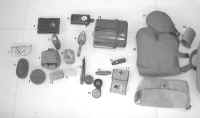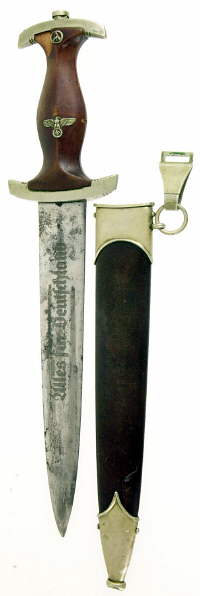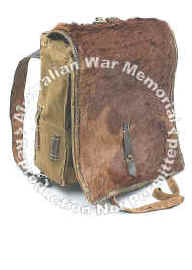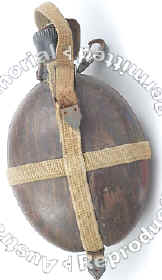 |
|
|||
|
|
||||
|
German Military Equipment WW1 & WW2 |
|
 |
WWI
German Trench Steel Breast Plate Grabenbrustpanzer During the WWI, the German Army utilized this type of steel breast plate together with steel M16 helmet and brow plate for its raiders, machine gunners and sentries in forward positions of the forward battle lines.
It was made to protect the soldiers from riffle bullets and grenade splinters.
|
| France. c. 1917. A Canadian Army soldier wearing a captured German Army body shield. (Donor Canadian Official Photograph) | 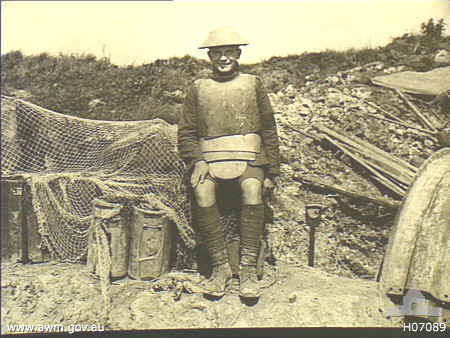 |
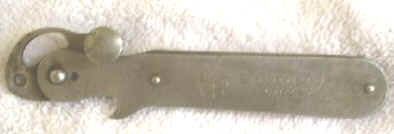 |
I was told that this can opener is of German army issue, probably WW2. Item reads on one side: Eminent Solingen. Other side reads: Made in Germany in very small print. Item is made of steel with wooden spacer between handle. Overall length is 6". |
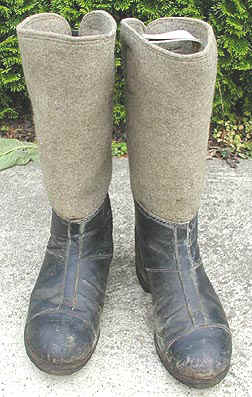 |
|
| Cold weather field boots. The leggings are made of felt. |
|
World War 2 German Field Equipment |
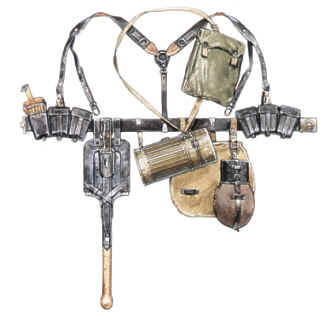 |
The basis for
all field equipment was a set of black leather "Y"-straps.
These consisted of two front straps which were hooked to a "D"
ring on the back of the cartridge pouches; their length was adjusted by
a set of square steel frame buckles fixed midway up the straps.
If the pouches were not worn, a set of supplementary loops consisting of a simple belt-width loop fitted with a "D" or rectangular ring were used to attach the straps to the belt. (The loop was slipped over the belt, and the "D" rings slipped into the hooks on the "Y" straps.) |
| The front straps tapered
outwards to become relatively broader at about breast level. At this
point, a steel stud could be fixed through a hole in the centre of each;
this was for the attachment of a pair of smaller auxiliary straps, which
could be attached to either the M1939 pack, combat pack frame or some
rucksacks. Like the front strap, these were adjusted by a set of
buckles. When the pack was not worn, these straps were tucked into the
belt.
The front straps passed over the shoulders, tapering sharply inwards again to wrap around a large steel "O"94 ring. Just behind each shoulder a short length of leather strap was sewn to each "Y" brace, bearing a steel "D"-ring. From the bottom of the "O" ring ran a single vertical back strap which hooked to the back centre of the belt with flat metal hooks, the rounded ends of which protruded upwards in front of the bottom part of the belt for about half its depth. The rear central "Y"-brace was adjustable for length by means of a row of holes and a metal stud. There were two versions of belt and supports: the standard-issue black leather version, and later reed green and olive green webbing versions, which were initially issued for use in North Africa, but became increasingly common on the continent as the war progressed. (The leather belt and straps were often seen painted tan brown for desert service.) The web version differed from the leather in that the straps were adjusted by sliders, rather than buckles and studs. Photos occasionally show leather belts combined with web support straps In the rear areas it was common for the front straps to be worn under the tunic shoulder straps. but this was seldom done under combat conditions. part of this page from http://www.angelfire.com/sk2/germanuniforms/ |
  |
|
WW2 German First Aid kit |
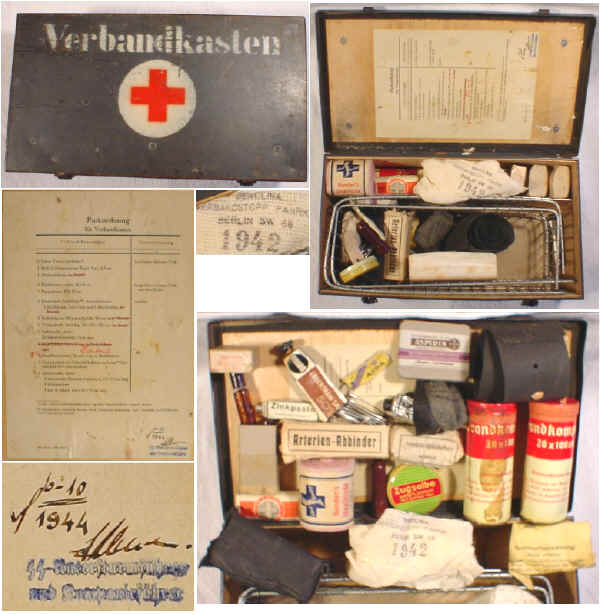 |
